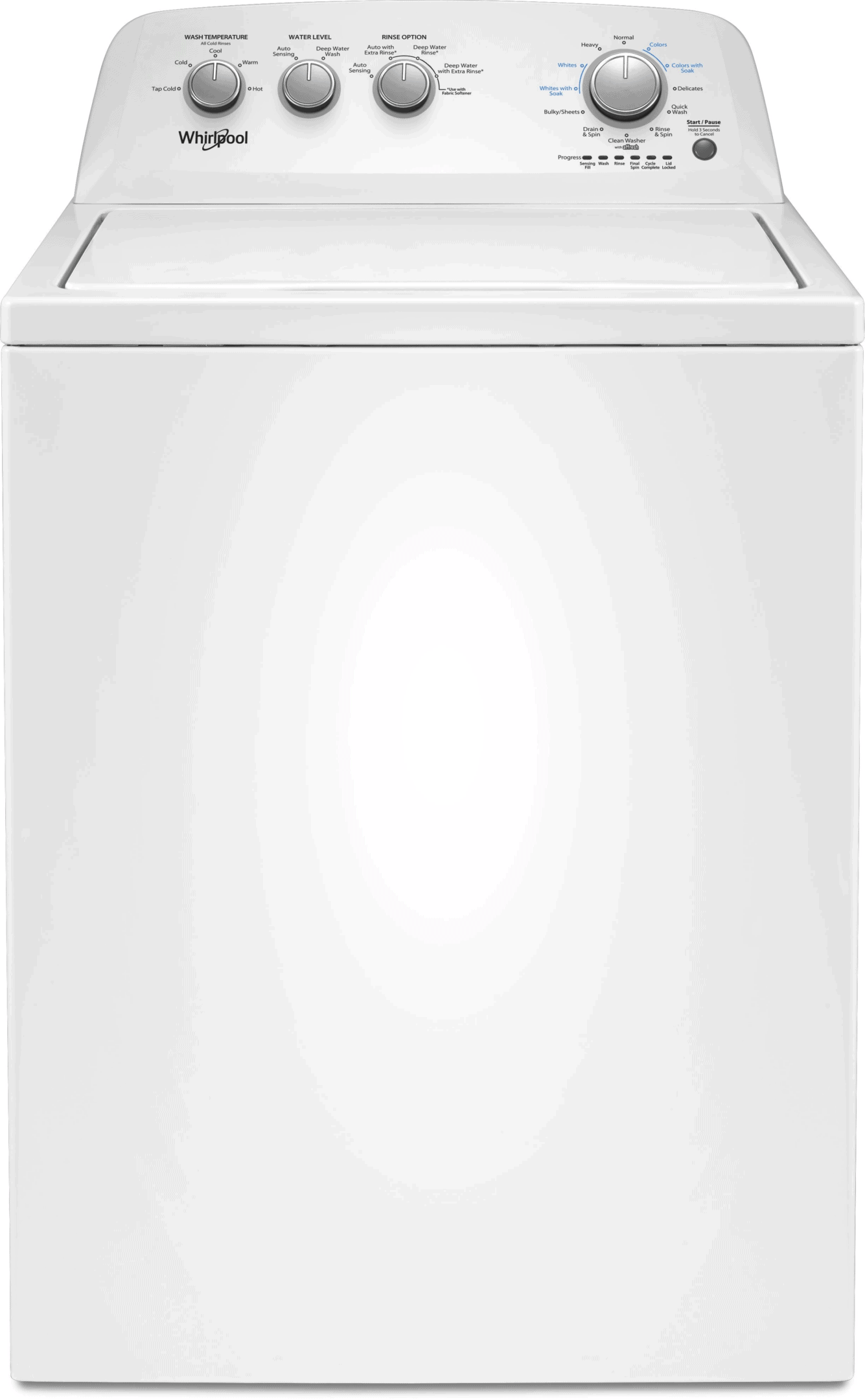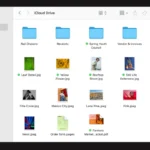If your Whirlpool washer stops spinning or draining, it can be a major inconvenience and may require immediate attention. The issue could be due to clogged drains or faulty motor couplings. The first step is to identify the root cause of the problem. This guide is designed to assist homeowners in troubleshooting and fixing their Whirlpool washer, offering clear, practical solutions. It provides step-by-step instructions for troubleshooting common spin and drain issues, enabling you to potentially resolve the problem yourself and avoid costly repairs. Dealing with a Whirlpool washer that won’t spin or drain doesn’t have to be daunting.
By methodically following the troubleshooting steps outlined—inspecting the motor coupling, ensuring there’s power, checking the door switch, clearing any blockages in the pump and drain hose, and assessing the belt, motor, and lid switch for issues—owners can often solve the problem themselves. This proactive approach not only helps in avoiding the cost and hassle of professional repair but also extends the life of the appliance. Regular maintenance is key to preventing future issues, ensuring your Whirlpool washer runs smoothly for years to come.

Whirlpool Washer Troubleshooting Guide: Spin and Drain Problems
If your Whirlpool washer isn’t spinning or draining properly, don’t panic! There are several common issues you can troubleshoot yourself before calling for repairs.
Check the Basics
Before diving into more complex fixes, start with these simple checks:
- Is the washer overloaded? Too many clothes can prevent the drum from spinning properly. Remove some items and try again.
- Is the washer level? An uneven washer can cause imbalance and prevent spinning. Adjust the feet to level the machine.
- Is the lid switch working? The washer won’t spin if the lid isn’t closed securely. Make sure the lid switch is functioning correctly.
Inspect the Drain Hose
- Kinks or clogs: A kinked or clogged drain hose will prevent water from draining. Straighten out any kinks and remove any blockages.
- Improper height: The drain hose should be installed at the correct height, typically between 39 and 96 inches above the floor. Check your washer’s manual for specific instructions.
Clean the Drain Pump Filter
Many Whirlpool washers have a drain pump filter that can become clogged with debris. Locate the filter (usually at the bottom front or back of the washer) and clean it thoroughly.
Troubleshooting Table
| Problem | Possible Cause | Solution |
|---|---|---|
| Washer won’t spin | Overloaded washer | Remove some items |
| Unbalanced washer | Level the washer | |
| Faulty lid switch | Check and replace if necessary | |
| Washer won’t drain | Kinked or clogged drain hose | Straighten or clear the hose |
| Improper drain hose height | Adjust the hose height | |
| Clogged drain pump filter | Clean the filter |
When to Call a Professional
If you’ve tried these troubleshooting steps and your Whirlpool washer still isn’t spinning or draining properly, it’s time to call a professional appliance repair technician. They can diagnose the issue and provide the necessary repairs.
Common Reasons for a Whirlpool Washer Not Spinning or Draining
Several factors might cause your Whirlpool washer to stop spinning or draining properly. Understanding these reasons is crucial for troubleshooting and getting your appliance back in operation swiftly.
Firstly, a clogged drain hose is a prime suspect. If the hose that carries water out of the washer gets blocked, water can’t leave the machine. This blockage stops the spin cycle since the washer won’t spin if it’s full of water.
Second, the lid switch might be faulty. This switch signals the washer when the lid is closed so it can start the spin cycle. If it’s broken, the washer thinks the lid is open and won’t spin.
Thirdly, worn-out motor couplings can also halt operation. These couplings connect the motor to the transmission, and over time, they can wear out or break. If this happens, you’ll likely hear the motor running but the washer won’t spin or agitate.
Another issue could be a malfunctioning water pump. If the pump is failing, it can’t remove water effectively, leading to draining issues.
Lastly, an imbalanced drum can prevent spinning. If the laundry is unevenly distributed inside the washer, it could throw off the balance and stop the spin cycle to prevent damage.
| Common Issue | Symptoms | Solution |
|---|---|---|
| Clogged Drain Hose | Washer full of water, no draining | Clear hose blockage |
| Faulty Lid Switch | Washer won’t start spin cycle | Replace lid switch |
| Worn-Out Motor Couplings | Motor runs, but no spinning | Replace motor couplings |
| Malfunctioning Water Pump | Poor draining | Check and replace pump |
| Imbalanced Drum | Washer stops spinning mid-cycle | Redistribute laundry |
Tackling these problems one by one can help identify the root cause of your Whirlpool washer’s spinning or draining dilemma and pave the way for a solution. Remember, regular maintenance can prevent many of these issues before they disrupt your laundry routine.
Checking for Clogs in the Drainage System
When a Whirlpool washer isn’t spinning or draining, the first thing to check is the drainage system. Clogs can happen more often than one might think, and they’re a common reason for these issues. Tackling clogs involves a few straightforward steps that don’t require calling in a professional right away.
Start by inspecting the drain hose. This hose can get kinked or blocked, stopping water from leaving the washer. Disconnect it and look through it. If it’s clogged, a gentle cleaning should do the trick. Sometimes, small items or lint build up inside, causing the blockage. Running water through it or using a long, flexible brush can help clear it out.
Next, it’s essential to check the drain pump filter. Whirlpool washers usually have a small door near the bottom to access this filter. It’s there to catch items that escape the drum but can itself become obstructed. Open the door, remove the filter, and clean it under running water. Be prepared for some water to come out when you open it, so having a towel handy is a good idea.
The main drain beyond your washer might also be the problem. If the hose and filter are clear, but issues persist, there might be a problem with the plumbing. This situation typically calls for a plumber, as it’s not part of the washer itself.
Regular checks and cleaning of these parts can prevent future clogs. Making it part of a maintenance routine reduces the risk of sudden washer failures and keeps the appliance running smoothly.
Testing the Lid Switch Assembly
When a Whirlpool washer won’t spin or drain, the lid switch assembly could be the culprit. This switch is a safety feature. It makes sure the washer lid is closed during the spin cycle. If it’s not working right, the washer won’t spin. Testing this component is straightforward but crucial.
First, find the lid switch. It’s usually under the washer’s top or near the door frame. Depending on the model, its exact location can vary. Once found, inspect it for any obvious signs of wear or damage. Things like cracks or burns can show it’s time for a replacement.
To test the switch’s function, a multimeter is helpful. This tool measures electrical flow and can tell if the switch is working as it should. Disconnect the washer from power before using the multimeter. Safety first. Check the switch for continuity – a continuous electrical path. No continuity means the switch is faulty and needs replacing.
Remember, different models might have different methods for accessing and testing the lid switch. The user manual can offer model-specific guidance. If unsure about the process or if the task seems too complex, contacting a professional is best. They have the skills to handle washer repairs safely and efficiently.
Regular checks on the lid switch assembly can prevent future issues. It’s a small part, but it plays a big role in the washer’s operation. Keeping it in good condition ensures the washer continues to work correctly.
Inspecting the Motor Coupling
If your Whirlpool washer isn’t spinning or draining, another key area to check is the motor coupling. This small part is crucial for the washer’s performance. It connects the motor to the transmission, making sure the power from the motor gets effectively transferred. When it breaks or wears out, the washer won’t spin.
First steps involve turning off the power and moving the washer away from the wall. Safety first, always unplug the washer before you start poking around inside.
The motor coupling might not be easy to spot. You’ll likely need to remove the outer cabinet or a back panel. The user manual or online guides specific to your model can show you how. Once you’re in, you’ll find the motor coupling located between the motor and the transmission.
Wear or damage is visible to the eye. A broken motor coupling will have parts that look torn or cracked. Sometimes, it might even be completely split apart. It’s a simple but vital piece that, if damaged, stops the whole machine from working right.
Replacing a motor coupling isn’t too complicated, but takes a bit of work. You’ll remove the old one, likely needing to take off the motor to do so. Then, slide the new coupling into place, and reassemble everything. Sounds straightforward, but if you’re not comfortable with DIY repairs, calling in a pro might be smarter.
Whirlpool washers are sturdy machines, but like any appliance, parts can wear down over time. Routine checks and maintenance can prevent unexpected breakdowns. Keep an eye on small but essential parts like the lid switch assembly and motor coupling. It’s better to catch issues early.
Steps to Troubleshoot and Fix the Issue
When a Whirlpool washer isn’t spinning or draining, it’s time to figure out why. Here’s how to tackle the problem step by step.
Check the Power Supply: First, make sure the washer is plugged in. It sounds simple, but sometimes the solution is as easy as reconnecting a loose plug. Also, check your home’s circuit breaker or fuse box. Power issues often lead to a washer not starting its cycle.
Inspect the Door Switch: The door must be fully closed for the washer to operate. If the door switch is broken, the washer won’t spin or drain. Press the switch by hand to see if it clicks. No click can mean it’s time for a replacement.
Look at the Pump and Drain Hose: Blockages are common issues. Pull out the washer and check the drain hose for kinks or clogs. Also, access the pump and look for any foreign objects that might have got stuck there. Clearing out debris can solve the problem.
Evaluate the Belt and Motor: Some Whirlpool washers use a belt to connect the motor to the drum. If this belt breaks or slips off, the washer won’t spin. Look for signs of wear or damage. Similarly, a faulty motor can be the culprit. Listen for unusual noises when you start the cycle, as these can indicate a motor issue.
Test the Lid Switch: For safety, washers have a lid switch that prevents them from spinning when open. Use a multimeter to test the switch for continuity. A lack of continuity suggests the switch needs replacing.
By following these steps, owners can often identify and fix issues causing their Whirlpool washer not to spin or drain. This process eliminates the need for immediate professional help and saves time and money.
Frequently Asked Questions
What should I do if my Whirlpool washer won’t spin or drain?
First, check the power supply to ensure the washer is powered. Inspect the door switch, as a malfunction can prevent spinning. Look for blockages in the pump and drain hose. Examine the belt and motor for wear or damage and test the lid switch for continuity.
How can I identify the cause of my Whirlpool washer’s issue?
Follow a step-by-step troubleshooting process including checking the power supply, inspecting the door switch, examining the pump and drain hose for blockages, evaluating the belt and motor for potential wear or damage, and testing the lid switch to ensure it has continuity.
Can I fix a Whirlpool washer that won’t spin or drain by myself?
Yes, many times you can identify and fix the issue on your own by following detailed troubleshooting steps, such as checking the power supply, inspecting key components like the door switch and testing the lid switch for continuity. This can save you both time and money on professional repair services.
Why is regular maintenance important for a Whirlpool washer?
Regular maintenance and checks on essential parts of your Whirlpool washer can prevent unexpected breakdowns, ensuring it works efficiently for longer. This proactive approach can help you save money by avoiding costly repairs and extending the life of your washer.
What are the common causes of a Whirlpool washer failing to spin or drain?
Common causes include power supply issues, a malfunctioning door switch, blockages in the pump or drain hose, wear or damage to the belt and motor, and a faulty lid switch. Identifying and addressing these issues can often resolve the problem.







